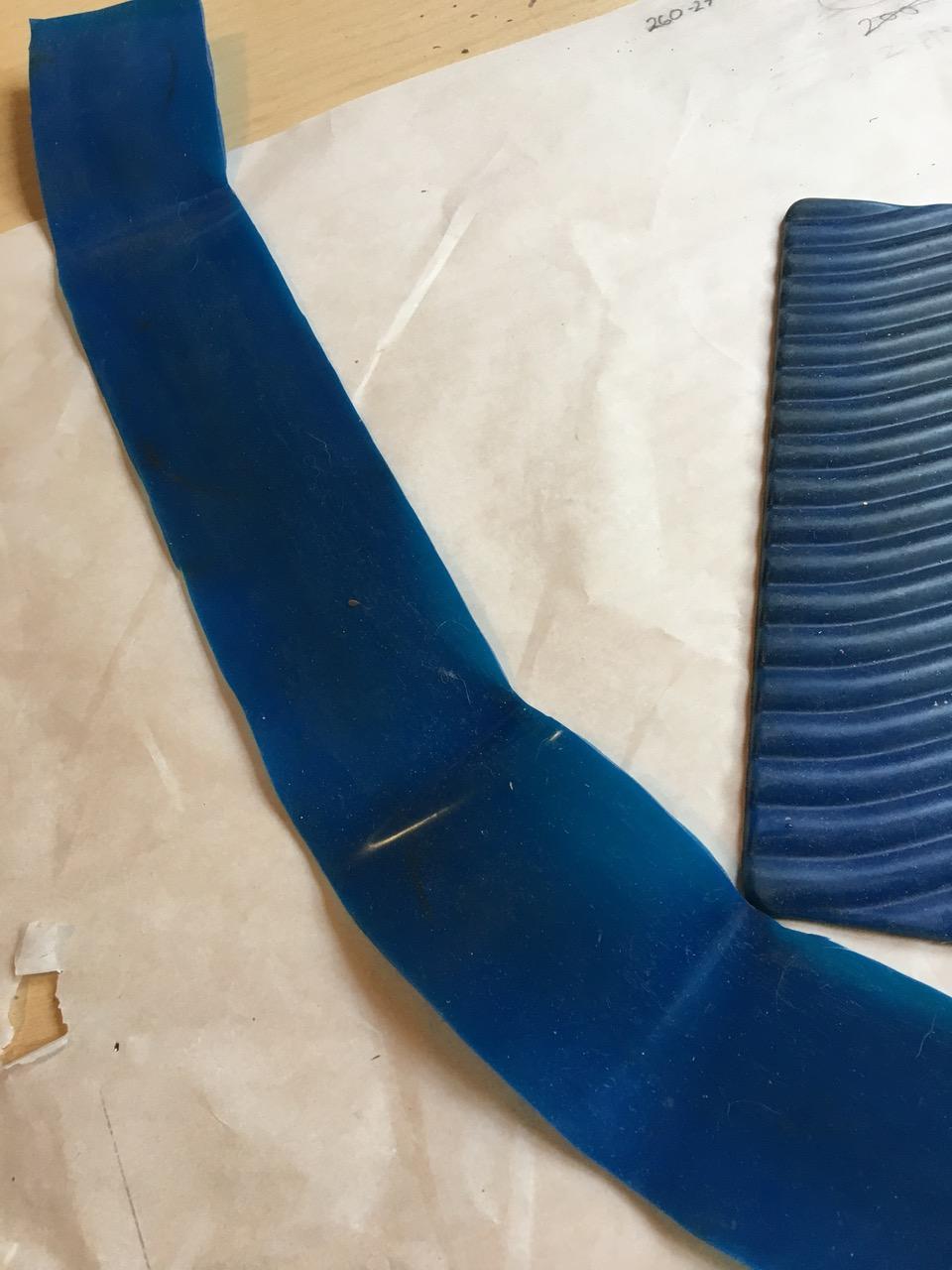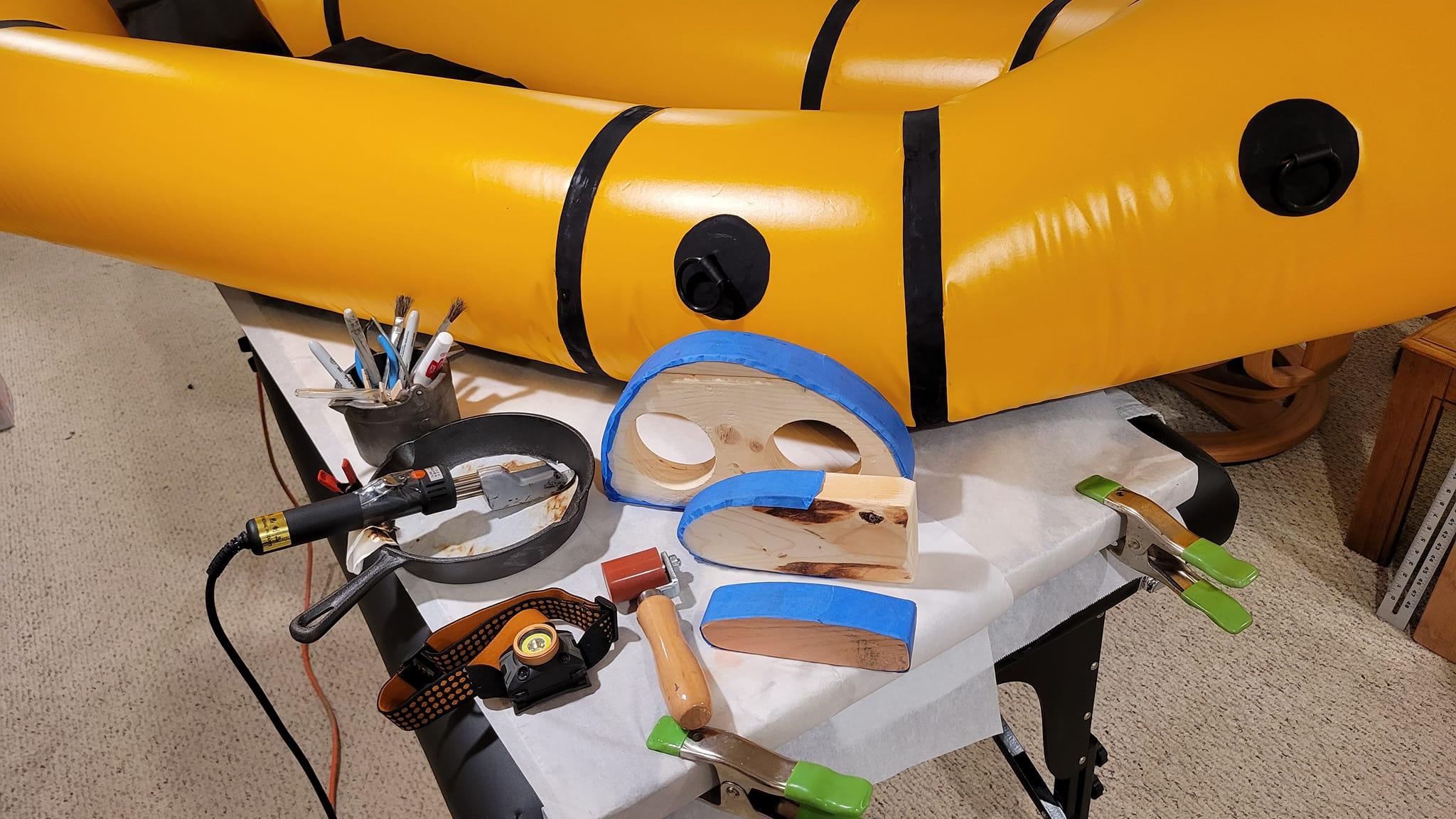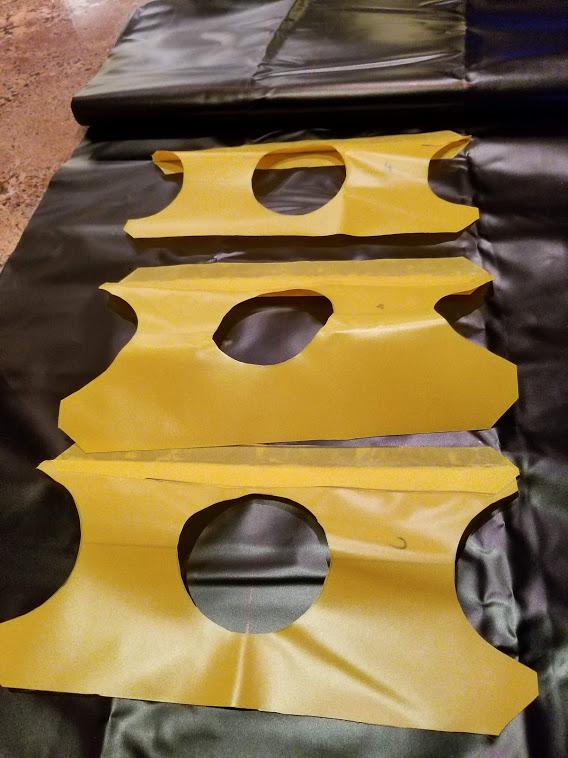Home › Forums › DIY Packrafts › Tips & Tricks
Tagged: camera mount
- This topic has 26 replies, 10 voices, and was last updated 4 months, 2 weeks ago by
 Matt (Admin).
Matt (Admin).
-
CreatorTopic
-
February 14, 2017 at 7:18 pm #2735
 Matt (Admin)Keymaster
Matt (Admin)KeymasterPlease post any tips and tricks you have developed during construction of your DIY Packraft! I frequently update the How-To pages based on your feedback, so you’ll be doing everyone a favor, and I always try to give credit where credit is due.
Note: If you wish to reply to a specific comment below (instead of starting a new thread), click the grey “Reply” link above the specific comment you are responding to – then your comment will appear nested below that comment. If you don’t click the “Reply” link for that comment then your own comment will appear out of context.
-
This topic was modified 7 years, 1 month ago by
 Matt (Admin).
Matt (Admin).
-
This topic was modified 6 years ago by
 Matt (Admin).
Matt (Admin).
-
This topic was modified 1 year, 10 months ago by
 Matt (Admin).
Matt (Admin).
-
This topic was modified 7 years, 1 month ago by
-
CreatorTopic
-
AuthorReplies
-
-
December 8, 2023 at 2:32 pm #18551
 clcranorParticipant
clcranorParticipantThanks. I also have a 360 camera and a stick for it. I was thinking of putting a fishing rod holder in the spray deck, slightly smaller, right behind the back seat, and adding a strap tie-in for it further up one of the rear tubes. most of the rivers I run have at least 1 stretch of class II-III and I want video of it. I haven’t attached the spray deck to either boat yet (not finished with the second one). I’ll post if I end up doing that.
Clay
-
December 8, 2023 at 3:35 pm #18552
 Matt (Admin)Keymaster
Matt (Admin)KeymasterCool – sounds good!
-
-
December 6, 2023 at 8:48 pm #18544
 clcranorParticipant
clcranorParticipantI didn’t know where else to ask this… You have some great video paddling on your trips. How do you secure your camera to the boat? I can thin of several ways, but none of them will get the same high point of view you have….
Clay
-
December 7, 2023 at 10:12 am #18549
 Matt (Admin)Keymaster
Matt (Admin)KeymasterThanks, Clay – I use a 360 degree action camera on the end of my trekking pole. The camera captures video of everything around it, and then I frame the shots when I’m editing at home. The trekking pole disappears from the shot because it’s hidden in the stitch line between the camera’s two lenses.
It takes some experimenting to figure out the best places to rest the trekking pole in the packraft – what height the camera should be, how far away, etc. Maybe I’ll make a how-to video about that sometime if people are interested – that’s something I’ve been thinking about for years, but never bothered to do.
Editing 360 video is time consuming, but it does give some unique perspectives, so I think it’s worthwhile sometimes.
Cheers
-
-
October 22, 2023 at 8:35 am #18438
 GReynParticipant
GReynParticipantWith some advice from Matt I made some directional attachment points for adding an Alpacka raft backband. The photos are pretty self-explanatory if you’ve gotten to this stage of your build. Outer dimensions ~3.5″x6.5″.




-
October 23, 2023 at 8:40 pm #18439
 Matt (Admin)Keymaster
Matt (Admin)KeymasterThanks for posting this! Cheers
-
-
August 3, 2023 at 2:34 pm #18204
 jJBBParticipant
jJBBParticipantI made my curved forms out of florist foam like this: https://www.walmart.com/ip/FloraCraft-FloraF-M-Foam-Disc-1-9-inch-x-9-8-inch-Green/593218875?from=/search
It’s easy to cut a large and small form out of one disc using a bread knife. I added a few layers of aluminum foil before the masking tape to keep it from melting and had no problems. After reading Leslie’s tip above, I would probably use a strip of silicone instead of the foil. A single silicone placemat would probably work great and be enough material.
It’s a good, cheap option for people who don’t have access to the tools to make them out of wood.
-
August 8, 2023 at 5:46 pm #18220
 Matt (Admin)Keymaster
Matt (Admin)KeymasterThat is a great idea! I’m going to add these heat sealing form tips to the Heat Sealing page.
-
-
June 10, 2022 at 9:53 pm #16406
 LeslieParticipant
LeslieParticipantI picked up a silicone bread loaf pan from the the thrift store and cut the smooth outer edge off (the straighter and longer the edge the better… maybe a cake pan?). I found this worked perfectly for welding seams as it has a slight give to it when you press with the iron and you don’t end up with nearly as many voids in the weld as you do when working on a hard surface. It is also fine with high heat, doesn’t stick and the underside of the weld is smooth and unblemished.

-
June 13, 2022 at 7:36 pm #16411
 Matt (Admin)Keymaster
Matt (Admin)KeymasterThat is a great idea – I will try it myself!
-
-
January 22, 2022 at 5:18 am #15668
 LuckyjimParticipant
LuckyjimParticipantJigs and tools I used… The 8″ cast iron pan made a great Hot Iron holder. It also acted as a heat sink so the Iron did not get to hot. My first raft…..

-
January 22, 2022 at 10:46 am #15669
 Matt (Admin)Keymaster
Matt (Admin)KeymasterGreat idea! I find that the weight of the iron’s cord sometimes drags the light aluminum stand off my table – this would certainly solve that problem!
-
-
June 4, 2021 at 6:17 pm #14594
 heatshearParticipant
heatshearParticipantWeight-weenie idea: I cut some fabric out of the seat baffles. I expect these would be plenty strong if made out the 115 GSM fabric?

-
June 5, 2021 at 9:32 am #14600
 Matt (Admin)Keymaster
Matt (Admin)KeymasterYep, I’ve been testing seats made entirely of 115 GSM fabric and haven’t had a problem yet (except where I did a poor heat sealing job on one!).
-
-
November 24, 2019 at 12:02 pm #11270
 unnamedpeaksParticipant
unnamedpeaksParticipantI got it at a dollar store. It looks something like this https://www.amazon.com/IMISNO-Sheets-Paper-Colors-thickness/dp/B01I1TED18/ref=sr_1_4?keywords=1mm+foam&qid=1574625656&sr=8-4
-
November 15, 2019 at 4:38 pm #11233
 unnamedpeaksParticipant
unnamedpeaksParticipantI found some very thin foam at a craft store, 1mm or less, and use this under the seams when I iron, as well as affix it to my bowl or form. It makes things WAY easier. The welding is faster, and requires less passes, usually can do in one go. If it’s too thick it causes problems, but if you can find some thin stuff to make the surface have a little give, you will love the result.
-
November 17, 2019 at 2:48 pm #11247
 Matt (Admin)Keymaster
Matt (Admin)KeymasterCool – any idea what kind of foam it is? Thanks!
-
-
June 12, 2018 at 3:01 pm #6584
 alaskastinsonParticipant
alaskastinsonParticipantTurn it inside out.
I tacked the 3 tube down using the cardboard tunnel, then turned the entire tube inside out and finished the seam. I found this a lot easier than trying to chase bubbles and inspect the seam looking through the tunnel. I thought I had a good seam until I looked it in the daylight and saw all the flaws.
With minimal origami folding skills, I was even able to turn the entire raft inside out through the zipper hole. After tacking the bow seam from the outside, I turned it inside out and ironed the bow 1-1 seam from the inside. (You’ll only be able to work on one side at a time, since the opposite side will be inside the other.)
This method also works well for adding attachment points. Tape them to the outside, turn the raft inside out and seal away. No AquaSeal needed.
Hope this helps,
Duncan
-
This reply was modified 5 years, 10 months ago by
 alaskastinson.
alaskastinson.
-
June 18, 2018 at 1:03 pm #6625
 Matt (Admin)Keymaster
Matt (Admin)KeymasterThis is an excellent tip! I had just assumed it would be too difficult to turn the tubes inside out so I didn’t even try it. I’ll give it a go on my next build though!
Thanks
-
This reply was modified 5 years, 10 months ago by
-
April 26, 2018 at 1:11 pm #6166
 Matt (Admin)Keymaster
Matt (Admin)KeymasterI’m sticking this topic to the front page because it got buried – please post tips here instead of starting a new topic.
-
February 14, 2017 at 7:18 pm #2483
 MikeGuest
MikeGuestMatt has some very good instructional videos on building his packrafts and all of the techniques will work to make a packraft. I have a few methods that I have used that may be less of a challenge.
I use a sticky stick and semi circle that works very well to hold the fabric while I weld on the belts. These are simply put, 2″ wide masking tape secured to a surface sticky side up, either flat or ached. The advantage is that you can lay your fabric on these surfaces and they will hold the fabric in place while you align the mating panel. once the panels are aligned you can lay the belt centered over the panel joint and weld about a 4-6″ section without the fear of the fabric shifting. After you weld your section you peel off the fabric and move up the panel to do the same procedure again. I find this much faster than the bowl and parchment paper.
Another I do is use a press block to press the welded joint after the weld rather than use the heat iron. I use a different type of heat system but the same idea, heat up the fabric, remove the heat and run a pressing block over the weld to set it tight. The press is nothing more than a piece of aluminum shaped like a boat with a wood block handle glued to it with JB weld. It’s only about 3″ long and 1″ wide so it’s easy to add a lot of pressure to the weld and not strain your welding tool.
Another thing I have done is to leave a window when welding up the final front and rear chamber weld. This is really simple, at a point that is over the joint junction I only weld one side of the panels for about 4″. After the “skip” on one side I continue the weld to the floor. Now I can add the sealant to the intersection at the front and rear of the raft plus some sealant at the rear tight bend on the inside. Once the sealant is dry I can go back and carefully weld the second half of the panel to the welding belt.
I also have used a small box, not much taller than a shoe box to help in the “tunnel” work. I cut a small hole in the top and taped a headlamp into it to shine down. I also cut a hole at the back (away side) to allow a flashlight to shine through.
These tricks have worked well for me but your mileage may vary. If one or more of these help I’m glad to share
Mike
-
February 15, 2017 at 8:27 am #2490
 MikeGuest
MikeGuestI tried to title the images but it didn’t take so
First is the 4-5″ access hole in the front and rear center welds before final seam weld up.
The box with the light in the top is next,
Then the press block
Then the sticky stick and sticky arch block with the masking tape mounted.
Mike
-
February 15, 2017 at 8:23 am #2489
 MikeGuest
MikeGuest
-
February 15, 2017 at 8:21 am #2488
 MikeGuest
MikeGuest
-
February 15, 2017 at 8:20 am #2487
 MikeGuest
MikeGuest
-
February 15, 2017 at 8:18 am #2486
 MikeGuest
MikeGuest
-
-
-
AuthorReplies
- You must be logged in to reply to this topic.